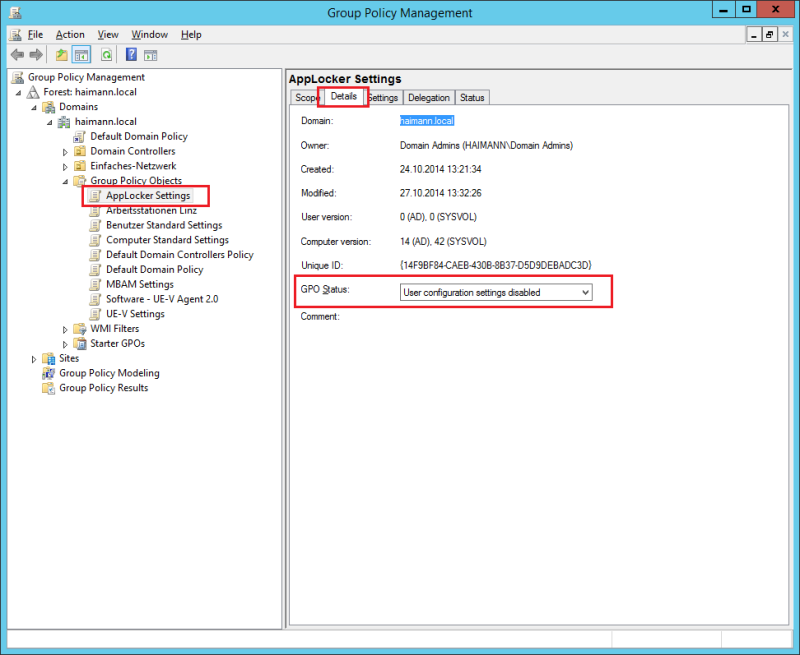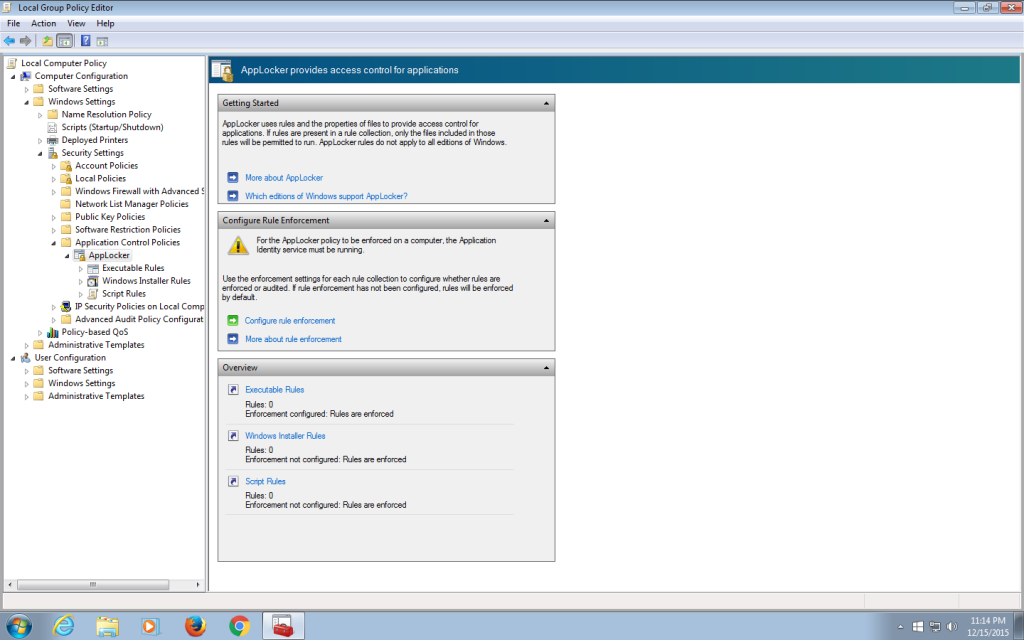
#Applocker group policy software#

On Target Devices Make sure the Application Identity service is enabled, set to Automatic, and running. Export AppLocker policies into individual XML files for later import.Performed testing for all end-user and administrative usage cases, and review audit entries in the Event Log.Auto-generate AppLocker rules for each of the file categories that will be used, and manually edit them to meet exact requirements.Put AppLocker into “Audit only” mode so that the rules created don’t actually block execution.Configure the Application Identity service set to Automatic and running.Deploy a reference computer that will be used for authoring of AppLocker rules.For rule enforcement, the last write to the GPO is applied.The rules Applocker uses allow the scope of an. AppLocker processes the explicit deny rule configuration before the allow rule configuration. AppLocker allows the administrator to control which applications are run on the computers in your domain.Group Policy does not overwrite or replace rules that are already present in a linked GPO.Rule collections that are not configured will be enforced.When constructing the Group Policy architecture for applying AppLocker policies, it is important to remember: After that configure AppLocker policies to be enforced and restart the computer. That allows Everyone to run All signed packaged apps. When the rule collection is configured for Audit only, no rules are enforced. COMPUTER > Policies > Windows Settings > Security Settings > Application Control Policies > AppLocker > Packaged app Rules Right-click and choose Create Default Rules. The Human Resources GPO contains 10 non-configured rules. For example, the result of the Contoso and Human Resources GPOs is 33 rules enforced, as shown in the client HR-Term1. The rules that are not configured are also applied. In the preceding illustration, note that all GPOs linked to Contoso are applied in order as configured. The following figure demonstrates how AppLocker rule enforcement is applied through linked GPOs. Therefore, you should carefully plan your deployment to ensure that only rules that are necessary are present in a GPO. If enforcement is not configured on the closest GPO, the setting from the closest linked GPO will be enforced.īecause a computer's effective policy includes rules from each linked GPO, duplicate rules or conflicting rules could be enforced on a user's computer. Configure the Applocker to Allow/Deny Execution of an App In the Group Policy Object Editor at Computer Configuration > Windows Settings > Security Settings > Application Control Policies > AppLocker, the Windows AppLocker settings exist. For example, if a higher-level GPO has the enforcement setting configured to Enforce rules and the closest GPO has the setting configured to Audit only, Audit only is enforced.

This is also called the default deny because all files that are not affected by an allow rule are automatically blocked.Įnforcement settings. An administrator created a rule to allow a file. An administrator created a rule to deny a file.

When determining whether a file is permitted to run, AppLocker processes rules in the following order: For example, if the current GPO has 12 rules and a linked GPO has 50 rules, 62 rules are applied to all computers that receive the AppLocker policy. Group Policy does not overwrite or replace rules that are already present in a linked Group Policy Object (GPO). Group Policy merges AppLocker policy in two ways: Together, all AppLocker rule collections compose the application control policy, or AppLocker policy. The options for rule enforcement are Not configured, Enforce rules, or Audit only. AppLocker divides the rules into the following collections: executable files, Windows Installer files, scripts, packaged apps, and packaged app installers, and DLL files. Rule enforcement is applied only to collections of rules, not individual rules.
#Applocker group policy professional#
This topic for the IT professional describes how application control policies configured in AppLocker are applied through Group Policy. Learn more about the Windows Defender Application Control feature availability. Some capabilities of Windows Defender Application Control are only available on specific Windows versions.


 0 kommentar(er)
0 kommentar(er)
